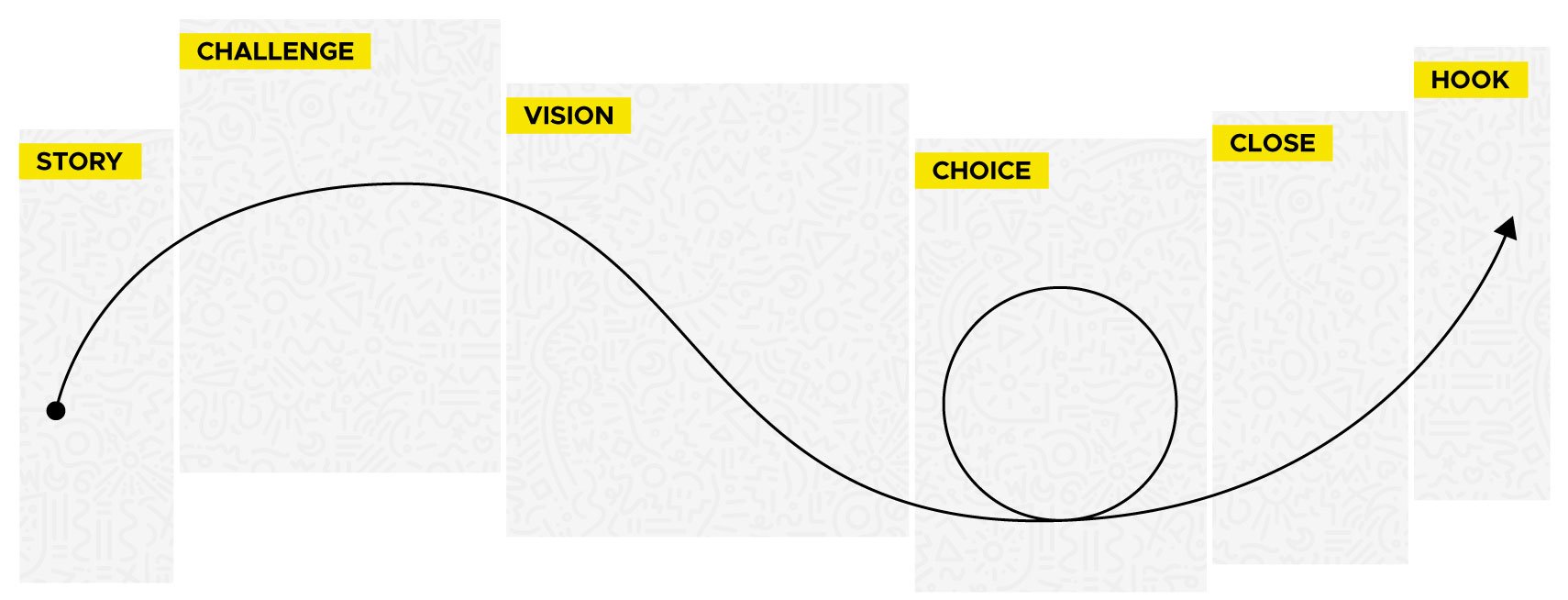Blog
How to turn your boring sales pitch into a thrill ride
The Thrill Ride Approach to Presenting
No matter what kind of presentation you are giving, your goal is to motivate someone to adopt your point of view. There are a few different approaches to doing this but the most widely used is Aristotle’s classic five-point plan to create a persuasive argument:
- Deliver a story to gain the audience’s interest.
- Pose a question or problem that has to be solved.
- Offer a solution.
- Describe specific benefits for adopting your solution.
- State a call to action.

Steve Jobs famously used this formula in his presentations to remarkable success. We’ve adapted and tweaked this formula a bit for modern audiences in what we call the Thrill Ride Approach.

Picture a roller coaster. When you get on a roller coaster, you’re excited and unsure of what is going to happen next. You have a general idea, but you don’t quite know how that steep drop is going to feel or how high the loop will seem when you’re at the top. Your audience is in a similar situation.
To open your presentation, do exactly as Aristotle says and open with a personal story that draws the audience in. Be careful not to make the story about you.
“Wait,” you say, “a personal story that’s not all about me?”
Getting Personal Without Making it ALL About You
The story you tell should describe an experience or situation from your point of view, but that anyone can relate to. You’re not boasting of your achievements or bemoaning past challenges – you’re creating a scenario your audience can picture themselves in, using yourself as the character. Your own passion and emotions – your pathos – will come out in the telling, making your story more authentic and engaging to the audience. When you speak of events specifically chosen to relate to your audience, they will begin to connect with you and see themselves in you and your situation.
What you don’t want to do is lose the audience’s attention right off the bat by giving your name, past experience, who you’ve worked with, or what to expect in the presentation.
Does a park attendant tell park goers when to expect every twist and turn on the roller coaster? Of course not. Doing so eliminates the suspense and diminishes the joy of the ride. The same is true of your presentation.

Carry the Audience to the End
Next you’ll want to outline The Challenge. What are we up against? What needs solving? This is the uphill climb before the big heart-pounding drop on a roller coaster. Depending on the situation, your audience may be aware of the problem already, however, they may not have the full picture.
This gets us to The Vision or the big drop. This is the meat of your presentation where you offer your solution. Here you want to focus largely on the emotional benefits of the solution, particularly in your speech. Focusing on the benefits of your solution will keep your talk focused on your audience and prevent you from talking about you and your brand too much.
Next comes the loop, comprised of The Choice and The Close. Here you’ll present the audience with their options, including your own. This gives you a chance to compare your solution to what else is available and walk through the details, making it clear why your solution is the best.
Lastly, you’ll want to end with a Hook. This is your opportunity to tie things back to the story you opened with and give a call to action. Always make sure you end with a call to action. This can be something as simple as a bit.ly to a website or a link to a landing page, but your talk should always end by asking your audience to engage with your brand beyond the presentation.
When followed closely, this simple formula can turn a dry and impersonal sales pitch into a deeply engaging story, one with a much higher chance of sticking with your audience well after you’ve stopped speaking.
And that means a greater chance of closing the deal.
Tired of seeing your audience drift off while giving the pitch you worked hard to create? Learn ways to keep your audience engaged with this guide to the perfect pitch.

